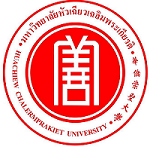กรุณาใช้ตัวระบุนี้เพื่ออ้างอิงหรือเชื่อมต่อรายการนี้:
https://has.hcu.ac.th/jspui/handle/123456789/3733| ชื่อเรื่อง: | Development and validation of TLC-densitometry method for quantitation of 1′-acetoxychavicol acetate in Alpinia galanga(L.) Willd. rhizome green solvent extracts |
| ผู้แต่ง/ผู้ร่วมงาน: | Nitikan Thipunkaew Piyawat Chaivichacharn Pattarida Chanachai Paveena Wongtrakul Sunee Channarong นิติกานต์ ธิปันแก้ว ปิยวัฒน์ ชัยวิชาชาญ ภัทริดา ชนะชัย ปวีณา ว่องตระกูล สุนี ชาญณรงค์ Huachiew Chalermprakiet University. Faculty of Pharmaceutical Sciences Huachiew Chalermprakiet University. Faculty of Pharmaceutical Sciences Huachiew Chalermprakiet University. Faculty of Pharmaceutical Sciences Huachiew Chalermprakiet University. Faculty of Pharmaceutical Sciences Huachiew Chalermprakiet University. Faculty of Pharmaceutical Sciences |
| คำสำคัญ: | Alpinia galanga ข่า Plant extracts สารสกัดจากพืช Thin-layer chromatography-densitometry เครื่องวิเคราะห์ปริมาณสารบนแผ่นวิเคราะห์รงคเลขผิวบาง 1′-acetoxychavicol acetate 1' อะเซทอกซีชาวิคอลอะซิเตต Cosmetics เครื่องสำอาง |
| วันที่เผยแพร่: | 2024 |
| แหล่งอ้างอิง: | Science, Engineering and Health Studies, 18, 24050024 |
| บทคัดย่อ: | Alpinia galanga(L.) Willd. has been used as a remedy for gastrointestinal diseases in traditional medicine in several countries. 1′-Acetoxychavicol acetate (ACA)is a major phenylpropanoid extracted from the galanga rhizomes and possesses many biological activities. In this study, galanga rhizome was extracted and projected for use in cosmetic and topical formulations. The thin-layer chromatographic densitometry method was developed for quantitation of ACA in thegalanga extracts. The method was validated per AOAC guidelines. The ACA bands were analyzed at 219 nm. The calibration curve’s regression line was a quadratic function in the range of about 2.062–6.186 μg/band. The equation was -169.85x2 + 3069.6x + 286.6, with a correlation coefficient (R2) of 0.9995. The relative standard deviations for the precision study were 1.62%–2.54%. The recovery was performed by spiking known amounts of ACA in the sample matrixes. After removing ethanol, the extracts, namely, soft extract, glycerol liquid extract and propylene glycol liquid extract were used to determine the percent recovery. The average recovery was 94.59± 2.33% for soft extract, 96.16± 2.44% for glycerol liquid extract, and 95.75± 3.04% for propylene glycol liquid extract. In conclusion, a simple and reproducible semi-automated TLC-densitometry was validated successfully. This method could be used for the estimation of ACA in galangal extracts containing glycerol and propylene glycol, both in markedly available samples and in the laboratory. |
| รายละเอียด: | สามารถเข้าถึงบทความฉบับเต็ม (Full Text) ได้ที่ : https://li01.tci-thaijo.org/index.php/sehs/article/view/262785/179494 |
| URI: | https://has.hcu.ac.th/jspui/handle/123456789/3733 |
| ISSN: | 2630-0087 (Online) |
| ปรากฏในกลุ่มข้อมูล: | Pharmaceutical Sciences - Artical Journals |
แฟ้มในรายการข้อมูลนี้:
| แฟ้ม | รายละเอียด | ขนาด | รูปแบบ | |
|---|---|---|---|---|
| Development-and-validation-of-TLC-densitometry-method .pdf | 65.13 kB | Adobe PDF | ดู/เปิด |
รายการทั้งหมดในระบบคิดีได้รับการคุ้มครองลิขสิทธิ์ มีการสงวนสิทธิ์เว้นแต่ที่ระบุไว้เป็นอื่น
